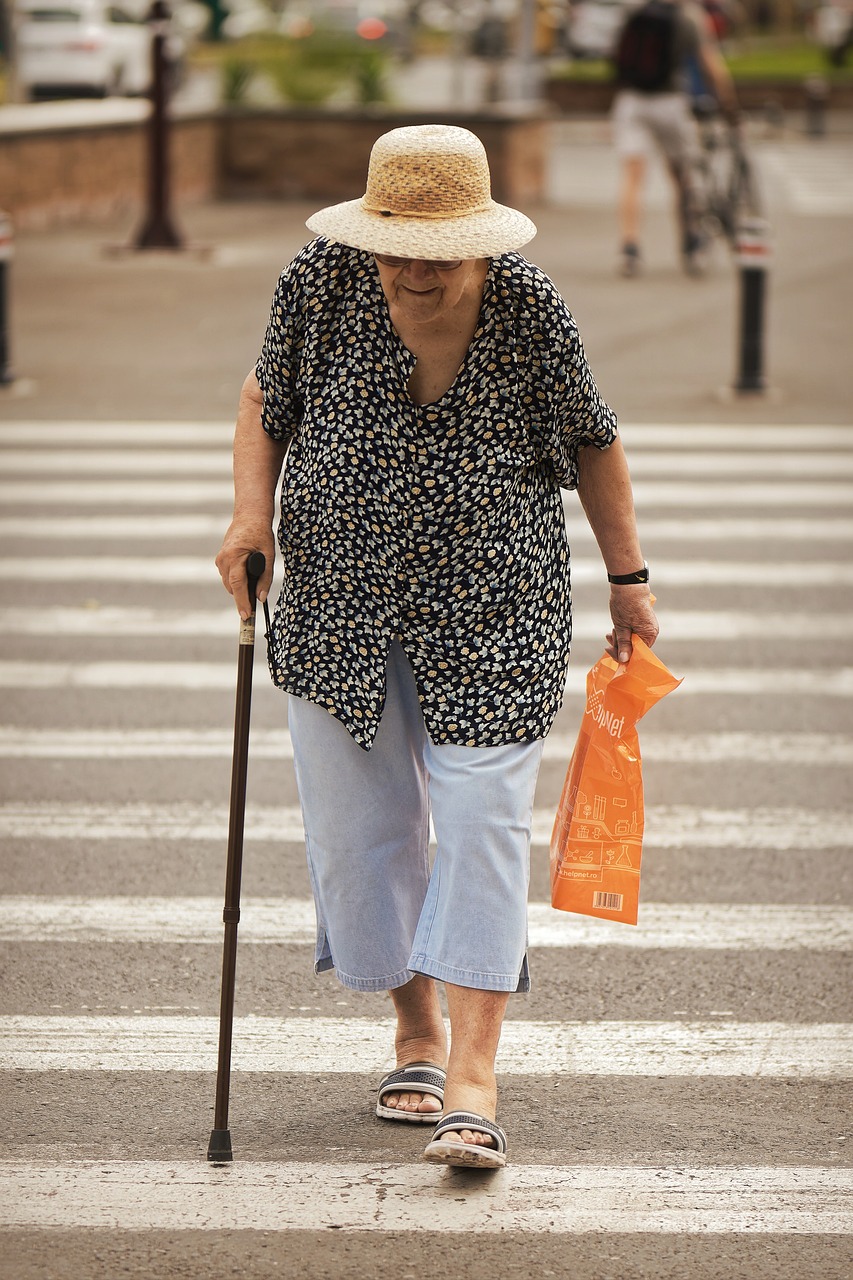Losing a loved one is undoubtedly one of life’s most difficult challenges, especially when their passing raises suspicions of wrongful death due to someone else’s negligence. In such distressing times, knowing what steps to take can provide some much-needed clarity and direction. In this blog post, we’ll guide you through the essential steps to take in the aftermath of a suspected wrongful death, offering support and practical advice in a friendly and empathetic tone.
1. Seek Immediate Support and Guidance
Understand the importance of seeking emotional support from friends, family, or professional counselors to help you cope with the overwhelming emotions that may arise.
2. Gather Evidence and Documentation
Learn how to gather crucial evidence and documentation related to the incident, including photographs, witness statements, medical records, and any other relevant information that may support your case.
3. Report the Incident to Authorities
Discover the importance of reporting the suspected wrongful death to the appropriate authorities, such as law enforcement agencies or regulatory bodies, to ensure that an official investigation is conducted.
4. Consult with a Qualified Wrongful Death Attorney
Understand the significance of consulting with a knowledgeable and compassionate wrongful death attorney who can provide expert guidance, evaluate your case, and explain your legal rights and options.
5. Understand Legal Procedures and Timeframes
Gain insight into the legal procedures and timeframes involved in filing a wrongful death claim, including the statute of limitations and any other relevant deadlines that must be adhered to.
6. Preserve Your Rights and Avoid Communication
Learn how to protect your legal rights by refraining from communicating with insurance companies or other parties involved in the incident without first consulting with your attorney.
7. Take Care of Yourself and Your Family
Remember to prioritize self-care and the well-being of your family during this challenging time, seeking support from loved ones and practicing self-care activities to help you navigate the grieving process.
By following these essential steps with care and diligence, you can ensure that your loved one’s memory is honored and that you pursue justice and accountability for their wrongful death. Remember, you’re not alone, and seeking guidance from experienced professionals can provide invaluable support as you navigate this difficult journey.
The Vital Role of Legal Representation: Guiding You Through Wrongful Death Claims with Compassion and Expertise
In the wake of a wrongful death, navigating the complexities of legal proceedings can feel overwhelming. However, having the right legal representation by your side can make all the difference in seeking justice and closure for your loved one. In this blog post, we’ll delve into the crucial role that legal representation plays in wrongful death claims, highlighting the importance of compassionate guidance and expert advocacy in a friendly and approachable tone.
1. Understanding Your Rights:
Explore how a qualified wrongful death attorney can help you understand your legal rights and options, empowering you to make informed decisions every step of the way.
2. Navigating Complex Legal Procedures:
Learn how legal representation can guide you through the intricate legal procedures involved in filing a wrongful death claim, ensuring that your case is handled with care and diligence.
3. Expert Evaluation of Your Case:
Discover the value of having an experienced attorney evaluate the merits of your case, identifying key evidence and potential legal strategies to strengthen your claim.
4. Negotiating with Insurance Companies:
Understand the role of legal representation in negotiating with insurance companies on your behalf, advocating for fair compensation for your losses while protecting your rights.
5. Providing Emotional Support:
Recognize the compassionate support that a dedicated attorney can offer during this difficult time, providing a listening ear, empathetic guidance, and reassurance when you need it most.
6. Advocating for Justice and Accountability:
Explore how legal representation serves as a powerful advocate for justice and accountability, fighting tirelessly to hold responsible parties accountable for their actions.
7. Offering Peace of Mind:
Experience the peace of mind that comes with having a skilled attorney handle the legal aspects of your wrongful death claim, allowing you to focus on healing and honoring your loved one’s memory.
With the right legal representation by your side, you can navigate the complexities of wrongful death claims with confidence and peace of mind. Trust in the expertise and compassion of a dedicated attorney to guide you through this challenging journey toward justice and closure.
Unseen Wounds: Addressing Mental Health Workplace Injuries in the Office
In today’s fast-paced and demanding work environments, the focus on physical safety is often paramount. However, there’s another aspect of workplace safety that is equally important yet often overlooked: mental health. Just as physical injuries can occur in the workplace, mental health injuries are also a significant concern, particularly in office settings where stress, pressure, and long hours are commonplace.
In this article, we’ll delve into the issue of mental health workplace injuries in office settings, explore their causes, effects, and most importantly, discuss strategies for prevention and support.
The Invisible Epidemic
While physical injuries are often immediately visible and treated, mental health injuries can be insidious and go unnoticed for extended periods. Stress, anxiety, depression, burnout, and other mental health issues can significantly impact an individual’s ability to function effectively in the workplace. Factors such as excessive workload, unrealistic deadlines, poor work-life balance, lack of support, and interpersonal conflicts can contribute to the development of these issues.
The Toll on Individuals and Organizations
The consequences of mental health workplace injuries are far-reaching. For individuals, they can manifest as decreased job satisfaction, increased absenteeism, reduced productivity, and even more severe outcomes such as substance abuse or suicidal ideation. From an organizational perspective, these issues can lead to higher turnover rates, decreased morale, increased healthcare costs, and a negative impact on overall company culture and reputation.
Prevention and Support Strategies
Addressing mental health workplace injuries requires a multifaceted approach that involves both prevention and support strategies.
Here are some key steps that organizations can take:
Promote a Healthy Work Environment:
Foster a culture that prioritizes work-life balance, open communication, and psychological safety. Encourage employees to take regular breaks, set realistic goals, and seek help when needed without fear of stigma or reprisal.
Provide Resources and Support:
Offer employee assistance programs (EAPs), counseling services, and mental health awareness training to help employees recognize and cope with stressors effectively. Ensure that managers are trained to identify signs of mental distress and provide appropriate support and accommodations.
Encourage Workload Management:
Implement strategies to help employees manage their workloads effectively, such as task prioritization, delegation, and realistic goal-setting. Avoid overloading individuals with excessive responsibilities or unrealistic deadlines.
Promote Work-Life Balance:
Encourage employees to prioritize their well-being outside of work by promoting flexible work arrangements, offering paid time off, and discouraging a culture of presenteeism where employees feel pressured to work long hours.
Foster a Supportive Community:
Create opportunities for social connection and peer support within the workplace through activities such as team-building exercises, support groups, and wellness programs. Encourage employees to reach out to each other for support and camaraderie.Mental health workplace injuries in office settings are a significant yet often overlooked issue that can have profound consequences for individuals and organizations alike. By prioritizing prevention and support strategies, organizations can create healthier work environments where employees feel valued, supported, and able to thrive. It’s time to recognize that mental health is just as important as physical health in the workplace and take proactive steps to address this critical issue. After all, a mentally healthy workforce is essential for long-term success and sustainability in today’s competitive business landscape.
April Fools’ Day Pranks: Laugh Responsibly, Prioritize Safety
April Fools’ Day, a day synonymous with pranks and practical jokes, is eagerly anticipated by many each year. However, amidst the laughter and harmless fun, it’s essential to emphasize the importance of prioritizing safety, especially in the context of personal injury law. While it’s tempting to engage in elaborate pranks, one must always consider the potential risks and consequences to avoid any accidents or legal liabilities.
The Fine Line Between Fun and Liability:
In the realm of personal injury law, there exists a fine line between harmless pranks and actions that can result in serious injuries or legal repercussions. What may seem like a harmless joke to some could lead to physical harm, emotional distress, or property damage to others. It’s crucial to recognize this distinction and act responsibly when planning and executing April Fools’ Day pranks.
Legal Implications of Unsafe Pranks:
Engaging in reckless or unsafe pranks can have serious legal consequences. In the event that a prank results in injury or property damage, the perpetrator may be held liable for negligence. This could lead to legal action, including lawsuits and financial compensation for the injured party. Additionally, if a prank causes emotional distress or constitutes harassment, it may also result in legal ramifications.
Prioritizing Safety:
While April Fools’ Day is a time for laughter and lightheartedness, safety should always be the top priority. Before executing any prank, consider the potential risks and take steps to minimize them. Avoid pranks that involve physical harm, dangerous objects, or situations that could lead to accidents. Instead, opt for harmless jokes that bring joy without putting anyone at risk.
Tips for Safe Pranking:
Know your audience: Consider the sensibilities and preferences of the individuals involved before planning any pranks.
Avoid dangerous props: Refrain from using sharp objects, trip hazards, or anything that could potentially cause harm.
Respect boundaries: Ensure that your pranks are good-natured and won’t cause undue stress or anxiety to others.
Communicate openly: If you’re unsure whether a prank is appropriate, discuss it openly with the intended target beforehand.
Be prepared to apologize: If a prank goes awry or unintentionally causes harm, take responsibility, and apologize sincerely.
As we celebrate April Fools’ Day, let’s remember that laughter should never come at the expense of safety. By prioritizing the well-being of others and exercising caution in our pranking endeavors, we can ensure that everyone enjoys the holiday responsibly. Let’s keep the fun alive while also respecting the boundaries and safety of those around us. After all, a good laugh is only truly enjoyable when it’s shared without causing harm.
From Cycling Trips, to Nature Walks; Legal Advice for Outdoor Enthusiasts This Spring
With the arrival of weather and the call of nature outdoor lovers eagerly prepare for spring escapades. Whether it involves cycling along paths or trekking through forests these pursuits provide an ideal way to savor the season. Yet amid the anticipation it’s important to be mindful of aspects associated with outdoor endeavors. In this blog post we’ll delve into guidance for outdoor enthusiasts to ensure a safe and delightful springtime outing.
Know Your Rights and Duties
It’s vital to comprehend the laws and regulations governing pursuits in your locality. Familiarize yourself with trail protocols, road rules for cyclists and any necessary permits for activities.
Respect property rights and designated wilderness zones. Trespassing can result in repercussions. Mar the outdoor experience for others.
Liability and Injury Prevention
Make safety a priority by donning equipment like helmets for cycling and robust footwear for hiking.
Stay vigilant about dangers on trails or roads such as terrain, wildlife encounters and changing weather conditions. Taking precautions can help avert accidents and injuries.
When arranging group outings consider implementing liability waivers to delineate risks and responsibilities, for participants.
Exploring Premises Liability
When you visit parks, campgrounds or recreational spots it’s important to keep premises liability laws in mind. Property owners are responsible, for ensuring an environment for visitors.
If you notice any conditions like damaged structures or dangerous obstacles make sure to report them to the authorities to prevent accidents and avoid potential legal conflicts.
Documentation and Communication
If an accident occurs or someone gets injured make sure to document the incident thoroughly. Take photos of the scene. Gather contact details from witnesses.
It’s crucial to notify the authorities or property owners about any accidents. Quick communication can help resolve matters and ensure proper medical care if required.
Seeking Legal Advice if Needed
Should you sustain an injury due to negligence or hazardous situations during pursuits consider seeking advice from an injury attorney experienced in premises liability cases.
A legal expert can review the circumstances of your injury establish liability and provide guidance on your rights and options for pursuing compensation.
Conclusion
As outdoor enthusiasts gear up for spring adventures understanding aspects is key, for an enjoyable time. By knowing your rights and obligations putting safety first and being prepared for issues outdoor lovers can fully embrace spring activities while reducing risks and securing peace of mind.
Enjoy your time, on the trails. Have a hiking adventure!
Understanding the Long-Term Impact of Concussions: Navigating Health and Legal Pathways
Concussions are commonly underestimated. Many individuals tend to ignore these knocks on the head, assuming they will naturally heal without any repercussions.
Yet concussions are essentially a type of brain injury referred to as a brain injury (TBI). Recent studies indicate that even a mild concussion can result in significant issues later in life, such as an increased risk of developing dementia.
As studied, concussions may double the risk of dementia. This study examined cases of concussions stemming from combat, road accidents, and falls. It found that even individuals who sustained a concussion without losing consciousness faced a 2.4 times higher risk of dementia later on. The risk rose to 2.5 times for those who did lose consciousness due to their injury.
Furthermore, the study revealed that the risk of dementia nearly quadruples for individuals with moderate to severe brain injuries.
It was also studied that traumatic brain injury (TBI) is one of the factors that can contribute to dementia rather than being the sole cause.
According to the Centers for Disease Control and Prevention (CDC) a concussion is described as a form of TBI that can result from a direct blow to the head or rapid shaking of the head. Common causes include falls, motor vehicle accidents, accidental impacts, assaults, and sports-related injuries. While concussions are not immediately life-threatening, their long-term effects can be significant and impact functions of wellbeing (such as light sensitivity), emotional stability, and sleep patterns.
Symptoms like worsening headaches, coordination difficulties, repeated vomiting, and slurred speech indicate the consequences of a concussion and prompt individuals affected to seek medical help.
In terms of recourse for concussions leading to a risk of dementia, if you have experienced a concussion due, to someone else’s negligence, you may be entitled to compensation. This could cover medical costs, reimbursement, lost income recovery, and non-economic losses like pain and suffering.In injury claims, potential future risks such, as dementia are usually not taken into account. However, the anxiety of facing these risks can be seen as a type of distress that may qualify for compensation.
To handle these matters and ensure you receive compensation, it’s essential to seek advice from a legal professional specializing in injury claims. This step is especially important before agreeing to any insurance settlements to prevent accepting less, than what you deserve.
Psychological Effects on Car Accident Victims
Car accidents are distressing events that can have lifelong emotional and psychological effects on those involved. While the physical injuries may heal, the mental scars can stay, affecting people’s daily lives and welfare. Understanding these effects and diagnosing the importance of seeking professional help is vital for recovery.
Signs of PTSD After a Car Accident
PTSD is a disorder that can progress after experiencing or seeing a traumatic event. Symptoms of PTSD following a car accident may include:
Re-experiencing the trauma
Avoidance
Negative changes in thinking and mood
Increased arousal and reactivity
Seeking Professional Help
Identifying the signs of PTSD and other mental health issues is the first step towards healing. It’s important for individuals affected by a car accident to seek professional help if they experience insistent psychological symptoms. Mental health professionals, such as psychologists and psychiatrists, can provide effective treatments for PTSD and other related conditions.
Treatment selections may include:
Cognitive Behavioral Therapy (CBT
Eye Movement Desensitization and Reprocessing (EMDR
Medication
In addition to professional treatment, support from family, friends, and support groups can play a critical role in the recovery process. Sharing experiences with others who have gone through similar situations can provide comfort and understanding.
The emotional and psychological aftermath of a car accident can be just as significant as the physical injuries. It’s important for survivors to acknowledge their feelings, understand that their reactions are normal, and decide when to seek professional help. Addressing the psychological impacts of car accidents can lead to better results and a healthier, tougher recovery.
Debunking A Few Medical Malpractice Myths
Some people are misinformed or have distorted beliefs that may not be factual about medical malpractice lawsuits. This may be caused by the sugarcoated news we see in the media. Not all the publicized news we see on TV is true, anyway. Let’s explore a few medical malpractice myths that should be discussed.
Myth #1; Some say there are many ‘frivolous malpractice lawsuits.
Fact: In reality, there’s more negligence happening than lawsuits.
Only a small fraction of those harmed by negligence actually took an action.
Malpractice lawsuits have actually decreased by 8 percent over the past decade.
Myth #2; There is a misconception that malpractice claims lead to premiums for doctors.
Fact: Studies have revealed correlation between malpractice payouts and the premiums paid by doctors.
A study was conducted on the reports of medical malpractice insurance providers.
The findings revealed that these insurers artificially inflated doctors’ premiums and misrepresented the public regarding the nature of medical malpractice claims.
A prior analysis of malpractice insurers indicated that their profits exceeded those of 99 percent of Fortune 500 companies.
Myth #3; Some argue that doctors are leaving their professions.
Fact: The American Medical Association data shows that the number of doctors in the U.S. has been steadily increasing for years, surpassing population growth rates.
Myth #4; Tort reform leads to reduced insurance costs for doctors.
Fact: Despite claims that tort reforms would decrease physicians’ liability premiums, there has been no evidence to support this. While insurers may pay out less in damages when awards are limited, they do not render these savings into premiums for doctors.
Personal Injury Law Myth: Filing an Injury Claim will Lead me to a Huge Financial Bonanza
There is a misconception that filing an injury claim will lead to a huge financial windfall. Many people are influenced by the high-profile cases they hear about in public debates, or in the news. However, it’s important to note that most personal injury settlements are kept more private than what is reported in the media. Sadly, some people think filing a personal injury claim is a simple way to make quick money. However, these claims actually stem from incidents where people have been injured due to the negligence of others, such as, in car crashes, medical malpractice, or faulty product incidents. The purpose of injury claims is to provide compensation to those who have genuinely suffered losses because of someone’s carelesness. Victims of accidents often wish that the incident never happened or that they didn’t have to experience the loss of a loved one rather than focusing on receiving compensation through these claims.
Unfortunately, the exaggerated narrative we get from the media can give individuals hope of receiving millions from a lawsuit, even if their injuries are minor or if their case lacks evidences.
The settlement one can receive from an accident varies significantly. In reality, there is no specific figure for a personal injury settlement.
Several factors come into play when determining the value of a claim, such as:
The nature and severity of the injury
The type of accident that caused the injury
The extent and duration of treatment
Whether the injuries are permanent
Any contribution by the victim to the accident
The insurance coverage available
How the accident impacted the victim’s life
Typically, more severe injuries lead to higher potential settlement amounts. Permanent injuries often result in settlements compared to injuries, from accidents.
Elderly Pedestrians and Personal Injury Law: Safeguarding Our Most Vulnerable
The safety and well-being of pedestrians, in settings are crucial issues in personal injury law. With cities becoming more crowded and streets busier, the risk of pedestrian accidents involving individuals rises significantly. This article delves into the complexities of injury cases concerning pedestrians, highlighting legal protections, challenges, and potential measures to improve their safety.
Exploring the Vulnerability of Elderly Pedestrians
Statistics and Concerns
pedestrians face heightened vulnerability on the streets due to factors. Data shows that they are at a risk of sustaining injuries or fatalities in accidents involving vehicles compared to younger individuals. Their vulnerability stems from factors such as mobility, slower reaction times and a greater likelihood of sustaining injuries upon impact.
Legal Considerations
The landscape surrounding personal injury claims, for pedestrians encompasses several important factors. Laws aim to safeguard the road users leading to specific regulations and legal precedents that specifically address the concerns of elderly pedestrians.
Understanding these intricacies is vital, for safeguarding the elderly and navigating the aftermath of an accident.
Guiding Elderly Pedestrians Through Personal Injury Claims
Obstacles in Legal Procedures
A hurdle in injury cases involving elderly pedestrians is proving negligence. Providing evidence of a drivers or citys fault due to conditions requires data collection and a solid grasp of personal injury law. Moreover the presence of existing health issues among the elderly can complicate claims as defendants might argue that these conditions, rather than the accident itself caused the injuries.
Enhancing Claim Validity
To bolster an injury claim it’s crucial to document all aspects related to the incident. This involves collecting witness accounts securing surveillance footage and obtaining records of sustained injuries. Seeking assistance from an injury attorney experienced in dealing with cases involving pedestrians can significantly influence the outcome by providing expert guidance through legal complexities.
Preventive Actions and Legal Adjustments
Enhancing Urban Infrastructure
Enhancements to infrastructure play a role, in safeguarding elderly pedestrians. This includes implementing crosswalks extending pedestrian signal durations and creating pedestrian zones.
Legal changes focused on improving road safety standards are crucial. These reforms can introduce penalties for drivers who put pedestrians at risk and promote the implementation of pedestrian urban planning practices.
Educational initiatives that target both drivers and pedestrians play a role, in raising awareness about road safety for individuals. Community based programs like volunteer led escort services for pedestrians also play a role in ensuring their safety and well being while out on the streets.
As our society progresses it’s important to adapt our approach to safeguarding all pedestrians, the elderly. By combining advocacy city planning improvements and community assistance we can create an environment, for older members of our community to travel through.











